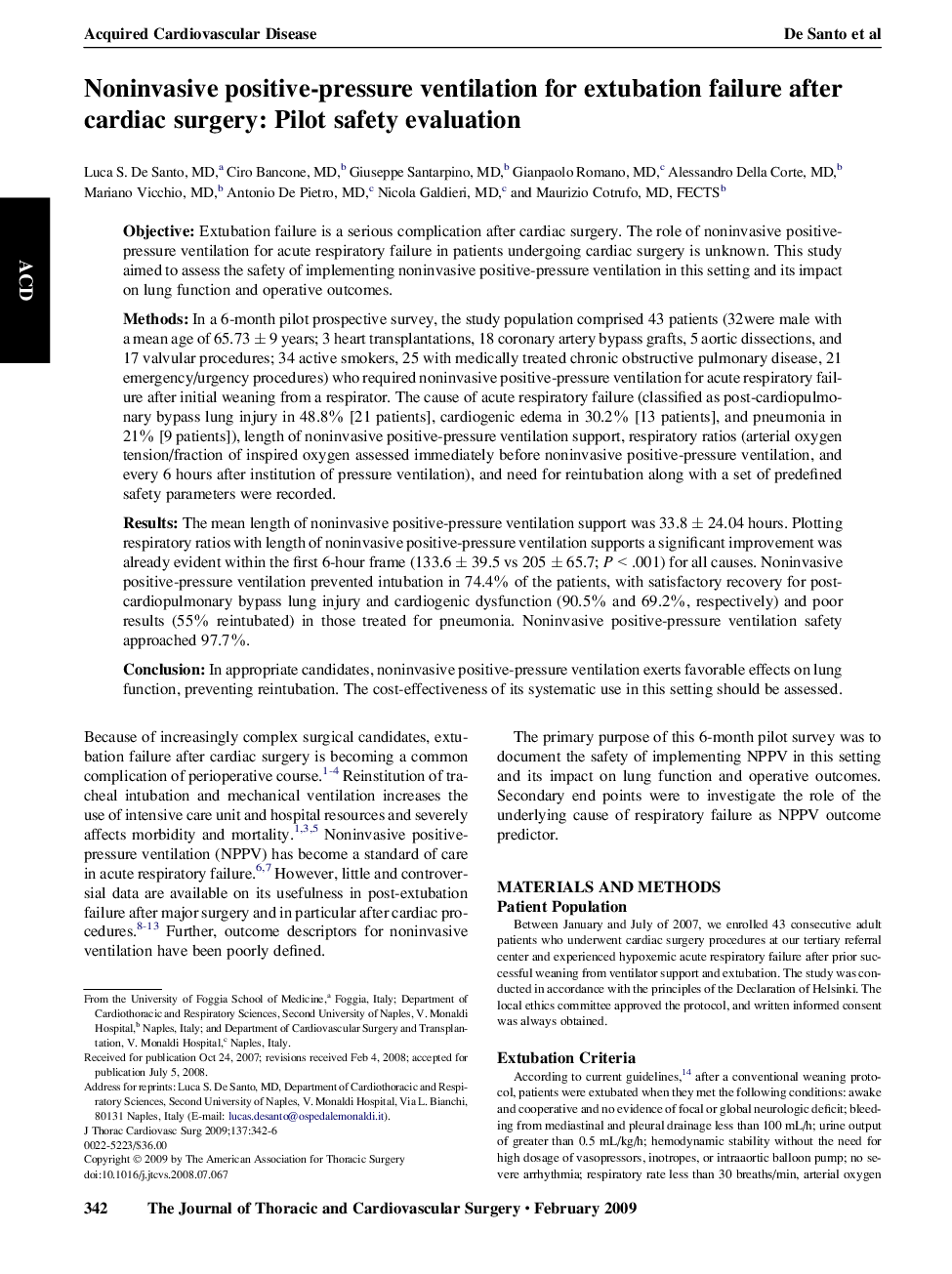| Article ID | Journal | Published Year | Pages | File Type |
|---|---|---|---|---|
| 2985738 | The Journal of Thoracic and Cardiovascular Surgery | 2009 | 5 Pages |
ObjectiveExtubation failure is a serious complication after cardiac surgery. The role of noninvasive positive-pressure ventilation for acute respiratory failure in patients undergoing cardiac surgery is unknown. This study aimed to assess the safety of implementing noninvasive positive-pressure ventilation in this setting and its impact on lung function and operative outcomes.MethodsIn a 6-month pilot prospective survey, the study population comprised 43 patients (32were male with a mean age of 65.73 ± 9 years; 3 heart transplantations, 18 coronary artery bypass grafts, 5 aortic dissections, and 17 valvular procedures; 34 active smokers, 25 with medically treated chronic obstructive pulmonary disease, 21 emergency/urgency procedures) who required noninvasive positive-pressure ventilation for acute respiratory failure after initial weaning from a respirator. The cause of acute respiratory failure (classified as post-cardiopulmonary bypass lung injury in 48.8% [21 patients], cardiogenic edema in 30.2% [13 patients], and pneumonia in 21% [9 patients]), length of noninvasive positive-pressure ventilation support, respiratory ratios (arterial oxygen tension/fraction of inspired oxygen assessed immediately before noninvasive positive-pressure ventilation, and every 6 hours after institution of pressure ventilation), and need for reintubation along with a set of predefined safety parameters were recorded.ResultsThe mean length of noninvasive positive-pressure ventilation support was 33.8 ± 24.04 hours. Plotting respiratory ratios with length of noninvasive positive-pressure ventilation supports a significant improvement was already evident within the first 6-hour frame (133.6 ± 39.5 vs 205 ± 65.7; P < .001) for all causes. Noninvasive positive-pressure ventilation prevented intubation in 74.4% of the patients, with satisfactory recovery for post-cardiopulmonary bypass lung injury and cardiogenic dysfunction (90.5% and 69.2%, respectively) and poor results (55% reintubated) in those treated for pneumonia. Noninvasive positive-pressure ventilation safety approached 97.7%.ConclusionIn appropriate candidates, noninvasive positive-pressure ventilation exerts favorable effects on lung function, preventing reintubation. The cost-effectiveness of its systematic use in this setting should be assessed.
